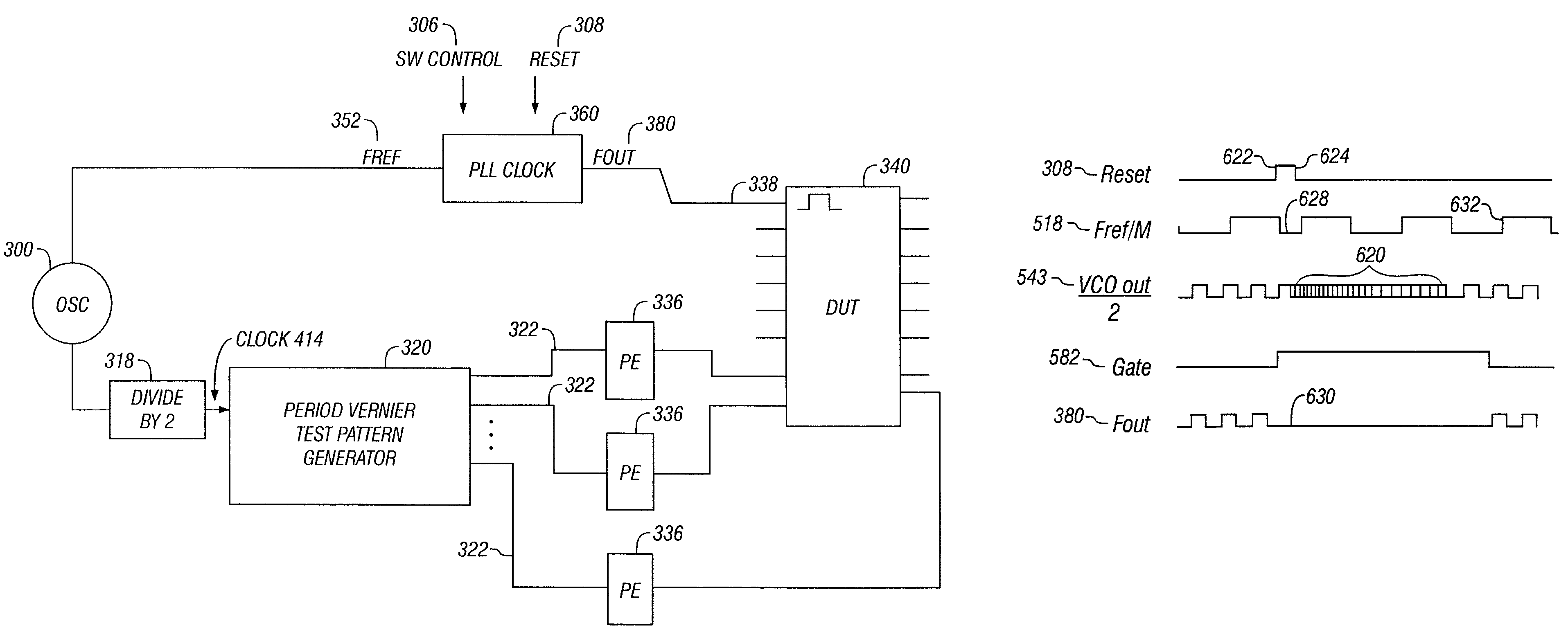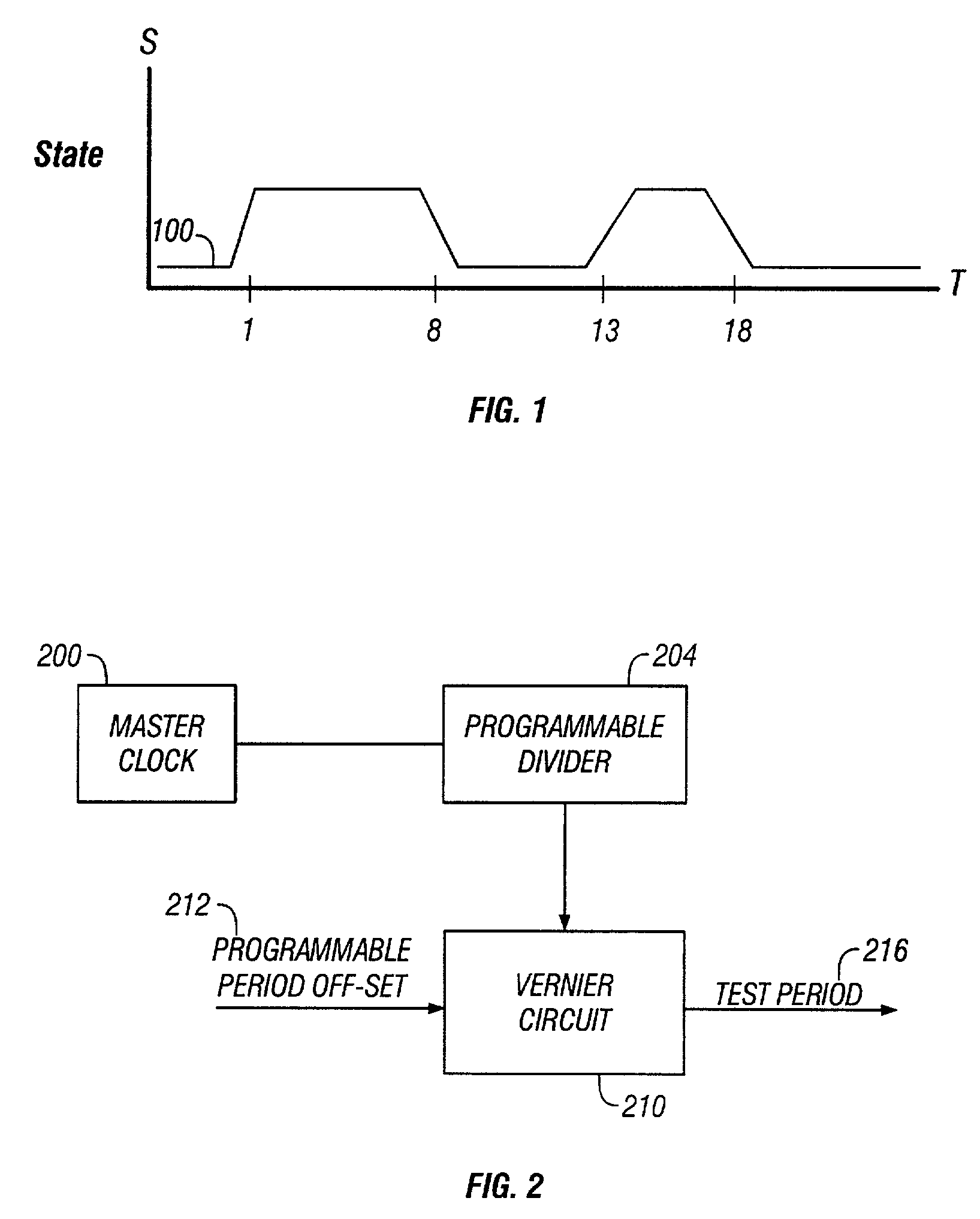Low-jitter clock for test system
a low-jitter clock and test system technology, applied in the field of low-jitter clocks for test systems, can solve problems such as the problem of period-to-period jitter associated with period vernier based clocks, and achieve the effect of easy movement of the occurren
- Summary
- Abstract
- Description
- Claims
- Application Information
AI Technical Summary
Benefits of technology
Problems solved by technology
Method used
Image
Examples
Embodiment Construction
[0028]FIG. 3 is a block diagram of a test system that, by using a period vernier for generating test pattern signals and a PLL-based clock having a range of programmable frequencies for generating clock signals, can improve edge placement accuracy and can provide a clock signal having low period-to-period jitter to a DUT clock input.
[0029]System oscillator (OSC) 300 provides a clock signal to a phase-lock-loop clock (PLL Clock) 360 through input signal Fref 352. The system oscillator 300 also provides a clock signal to a divide-by-2 circuit 318, which divides the clock signal in half. In this particular case, the system oscillator 300 is running at 800 MHz, but other frequencies could be used depending on application and design parameters. The output of the divide-by-2 circuit 318 is the master clock (Clock) 414, which in this case is running at 400 MHz, but other master clock frequencies can be obtained by using a system oscillator running at a different frequency or using a progra...
PUM
 Login to View More
Login to View More Abstract
Description
Claims
Application Information
 Login to View More
Login to View More - R&D
- Intellectual Property
- Life Sciences
- Materials
- Tech Scout
- Unparalleled Data Quality
- Higher Quality Content
- 60% Fewer Hallucinations
Browse by: Latest US Patents, China's latest patents, Technical Efficacy Thesaurus, Application Domain, Technology Topic, Popular Technical Reports.
© 2025 PatSnap. All rights reserved.Legal|Privacy policy|Modern Slavery Act Transparency Statement|Sitemap|About US| Contact US: help@patsnap.com



